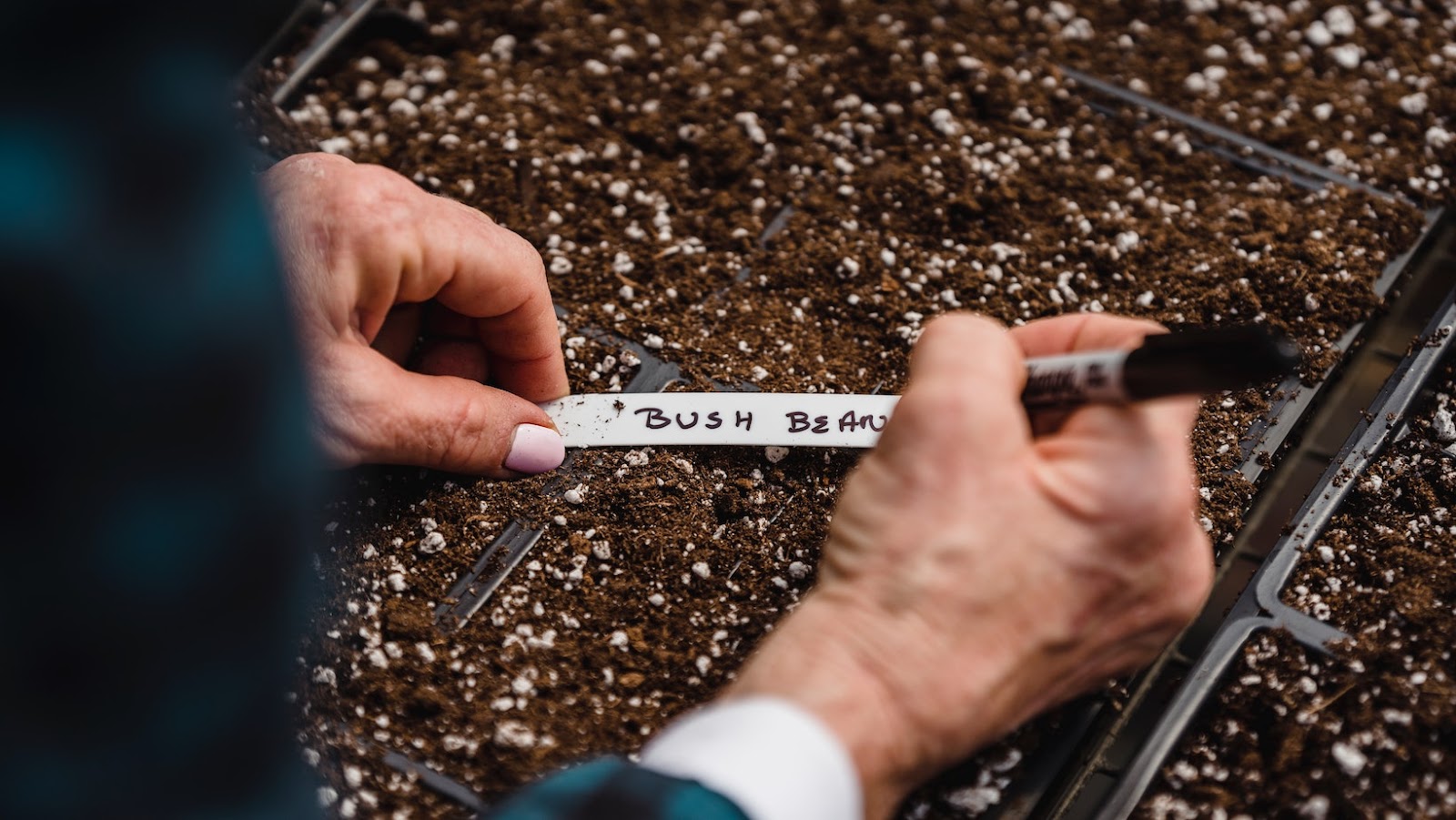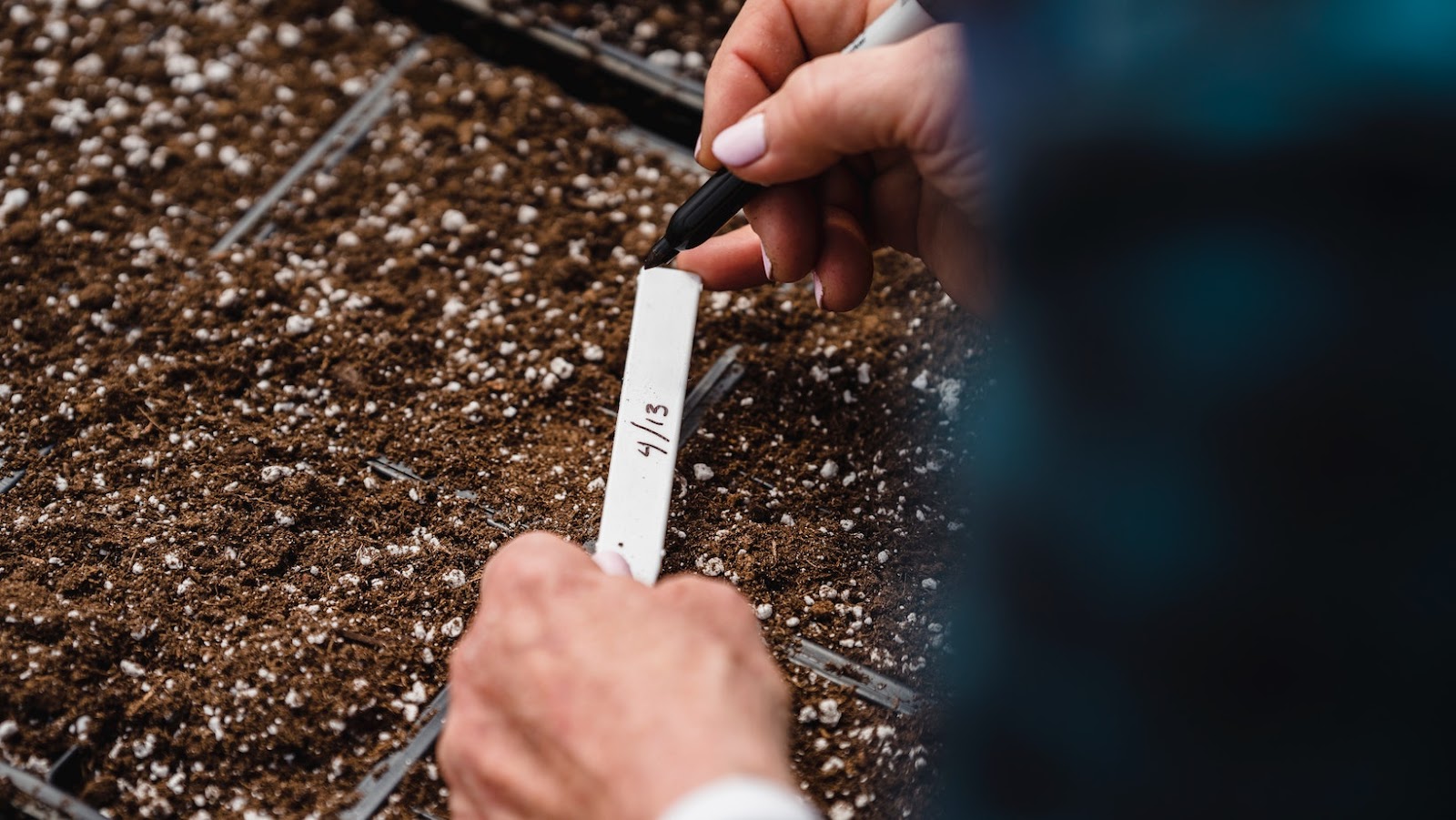Lawn care requires the right order of application for great results. So here’s a 3-step guide on how to use grass seed and fertilizer correctly!
- Start by prepping the soil. Weed, rocks, and debris must go. Loosen the topsoil with a rake or aerator.
- Apply the fertilizer evenly. Check your grass type and follow instructions for timing and dosage.
- Spread the grass seed in an area according to label instructions. Lightly rake it in and water it thoroughly.
Starter or slow-release fertilizers? It depends on the season, lawn state, climate, etc. Be sure to get advice from suppliers.
Did you know that putting down fertilizer over freshly sown grass can scorch it? To avoid this, read instructions carefully or you risk damaging growth patterns.
People have been trying to get the perfect lawn for centuries. New tech keeps coming out, so solutions differ. When it comes to grass seed and fertilizer, the order doesn’t matter much – you’ll probably forget which one you put down first!
Factors to Consider
Before seeding your lawn, consider multiple factors that can affect the growth and health of your turf. Here are key points to consider when deciding whether to spread fertilizer or grass seed first. Look at these factors:
Soil pH level Avoid applying if soil pH is not optimal (6.0-7.0). Add lime only after grass germinates.
Soil test reports Use fertilizer as per nutrient requirements. Select grass type according to sunlight, temperature and water usage; follow good growing practices.
Weed presence in your lawn Apply pre-emergent herbicides before fertilizing. Then, (1) Use weed-free seed and (2) apply post-emergent herbicides when indicated. Apply twice a year.
Drought conditions in your area/season (1) Water immediately after application. (2) Plan on a different season/day for seeding. For example, skip if severe drought or heat. If seeding is required, mix mulch or organic matter with seedbed for conservation.
Frost and freeze timing Fertilize at the end of winter or early spring (end of frost season). Wait until after the last danger of frost before sowing seeds.
Crust formation possibility over seedbed Avoid fertilizing if crust is formed or expected. After seeding, add light sprinkling of loose soil to prevent crusting.
Remember the soil condition and weather pattern of your area when seeding. Also, select quality seed and follow proper protocols for long-term success. For a beautiful green lawn that adds value to your property, examine these factors carefully before laying down seed or fertilizer! Putting down grass seed first is a gamble – like playing lawn roulette!

What Do You Put Down First Grass Seed Or Fertilizer
Confused about which comes first – the grass seed or the fertilizer? When starting a new lawn, putting down the grass seed first is best. Here are six reasons why:
- Risk of burning the seeds if you put fertilizer down first.
- Young grass seedlings need nutrients from soil, not fertilizer.
- Grass seed needs moisture to germinate properly and fertilizer may dry the seeds.
- Too much fertiliser may lead to uneven patches of different-coloured grass or plants.
- Fertilizers have high salt content and can affect soil PH level, blocking nutrient up-take.
- Seedling must grow roots before they need energy from fertilizers.
For already established lawns, both steps can be done simultaneously. Historians say colonial people would burn land and scatter seeds without using any fertilizer. Be careful when fertilizing – don’t create a salad instead of a lawn!
Fertilizer First
Fertilizers can have a big effect on the wellbeing and development of your grass. Here are the 4 main reasons why:
- They provide essential nutrients like Nitrogen, Phosphorus and Potassium, which are necessary for grass growth.
- Also, they improve soil quality by boosting microbial action that transforms organic matter into nutrients that plants can use.
- Fertilizers help control weeds, making the soil less inviting for them.
- Finally, you can accurately time fertilizer application before planting seeds to get best possible outcomes.
To make the most of fertilizer, always read product instructions. Different types of fertilizers require different applications.
Did you know the perfect time to apply fertilizer for cool-season grasses is usually early spring? Experts at the University of Minnesota Extension recommend homeowners in northern regions to begin fertilizing in late April or early May, when soil temperatures reach 50 – 55 degrees Fahrenheit.
Why not have it all? Fertilize and grow your lawn simultaneously with the combination method, and make your grass greener and your neighbours jealous.

Combination Method
The ‘Seed and Feed’ method is a great way to combine grass seed and fertilizer. Check out this table for germination durations when using it. The left column has pairs of fertilizers and their ratings for golf courses, lawn journals and brands that advocate it. Hover over the cells for more info or pics.
Scotts Turf Builder + Halts Crabgrass Preventer 4 to 6 weeks
Greenview Fairway Formula Seeding Success 7 to 10 days
Espoma Organic Lawn Starter Seed and Sod 7 to 14 days
When using the Seed and Feed technique, bear these tips in mind:
- Prepare the lawn first.
- Use certified seed at the right time.
- Ensure proper conditions like irrigation.
For the best results, select top-notch inputs and measure timings accurately. It’s like deciding between a toupee and hair plugs – either way, you’re trying to cover a bald spot!
Determining Which Method Is Best for Your Lawn
Confused about starting your lawn? Here’s how to decide the best way to do it!
- Look at the time of year and regional climate.
- Test your soil’s nutrients before planting.
- Add fertilizer two weeks before seeding if nutrient levels are low.
- Seed first, then apply fertilizer after 4-6 weeks if nutrients are sufficient.
- Never mix seeds and fertilizers.
Also, water your lawn consistently! Give it up to 1 inch of water per week.
Don’t miss out – follow these guidelines for lush lawns every time!

Conclusion: Which to Put Down First – Grass Seed or Fertilizer?
Grass Seed or Fertilizer: Which to Apply First?
Want a healthy lawn? Here’s the 3-step guide to help you decide!
- Check soil pH and type. Lime or sulfur might be needed before fertilizer or seed.
- Sprinkle the right amount of fertilizer across the lawn.
- Distribute grass seed over the area.
For small areas, you don’t need to use fertilizer before seeding. Also, pair up seed and fertilizer for your area. Don’t add too much nitrogen-rich fertilizer – The Old Farmer’s Almanac says it can cause overgrowth, mowing too often, and root damage.
